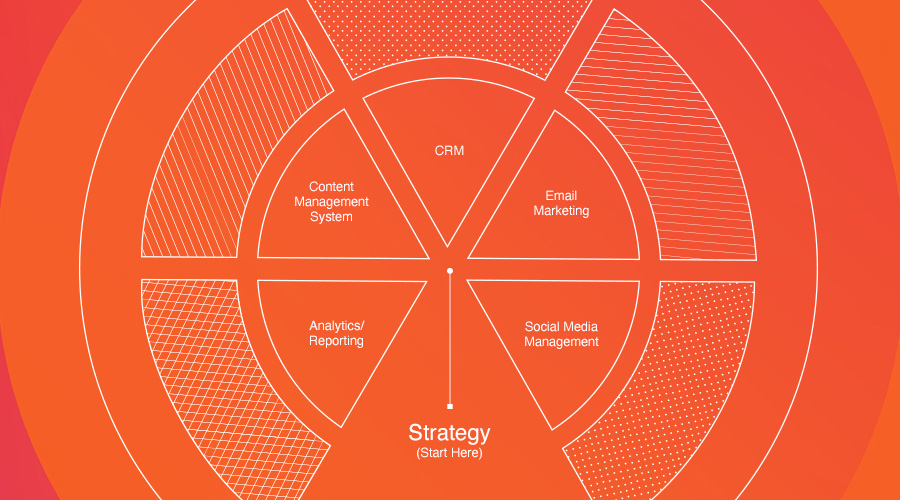A popular television commercial from the late ‘70s/early ‘80s paints the following scene: At a large, noisy event, a side conversation ensues where a party-goer reveals that his stockbroker is EF Hutton. At the mention of the name, as if on command, the room quiets and everyone leans in to listen. Because, “when EF Hutton talks, people listen.”
I can’t help but think that this commercial helped shape the early definitions of thought leadership. Sure, the term didn’t emerge as a business buzz word until the early 1990s, but EF Hutton had the right idea decades before – become that person who compels others to listen because they know you have something valuable to say.
Over the past several years, thought leadership has grown in its pervasiveness and has even permeated the marketing space, finding its way into many organizations’ marketing goals.
Maybe you’ve even said it, too.“We want to be seen as a thought leader.”
But what, exactly, does that mean? Who is a thought leader? What do they talk about? What (if anything) does your content strategy have to do with it?
Thought Leadership: An Evolving Definition
When the term first hit the business world, it referred to individuals or organizations who challenged the status quo, oftentimes pushing the boundaries of conventional thinking and delivering ideas that were unlike any others.
Now, as the way we search for and consume information is changing, how we think about thought leadership is changing, too. The Internet, Google, social networking platforms and more have made larger quantities of information more accessible. Content consumers are no longer simply looking for the most unique idea. Rather, they’re looking for the idea or information that meets their particular need at a particular moment.
Thought leadership is now a designation that is more widely recognized and bestowed upon creators of content that is helpful, educational and findable.
Many content consumers are also becoming more discerning of their sources. In fact, the 2018 Edelman Trust Barometer found that “voices of authority are now regaining credibility” and “expert voices across business registered broad gains in credibility.”
Both of these shifts are good news for organizations that want to build a thought leadership marketing strategy.
The challenge is, like with any marketing tactic, once it proves valuable and becomes widely popular, the market becomes crowded and the tactics become watered down. Since there are 27 million pieces of content shared everyday, it’s more important than ever to invest in a strategy for your content marketing – and truly promote those thought leaders.
Finding Your Thought Leaders
The first step in a thought leadership marketing strategy is to identify a few thought leaders. And you probably don’t need to go very far to find them. Whether through experience or research, every company is filled with potential thought leaders waiting to be elevated.
Look around your company and start to identify your “go-to” people – the ones whose opinions are always sought out for new projects or the ones who everyone wonders what the company will do if ever they leave because they’ll take all their knowledge with them.
Tap into people who soak up every ounce of knowledge about your industry through both internal and external sources – the ones who can tell you what trends you need to be ready for and what your competition is doing.
An important note: Thought leaders aren’t necessarily tied to a particular company role or rank any more. Whereas it used to be the CEO or another company executive that acted as the “thought-leader,” now it’s more about finding those individuals who are considered authoritative and trust-worthy, informative and opinionated. For instance, we have a wide array of contributors that span all disciplines and all titles because inspired ideas can come from anywhere.
It’s all about elevating the expertise of your thought leaders to position your brand as an expert source in your industry.
Content is (Still) King
I know, I know. I hate the phrase “content is king” as much as the next marketer. But let’s face it, content is still – and will always be – king. Sharing content that comes from an expert’s perspective may be the foundation of thought leadership, but a solid content strategy is still necessary to reap the benefits.
Thought leadership content is customer-centric.
Of course, thought leadership marketing requires experts who know the subject matter, but it also requires you to be an expert in your target audience. Writing content, rather than promoting an ad, becomes more about them and less about you. Know exactly who you want to talk to, what their most pressing concerns are and how they like to consume content. Then deliver the content that provides the best answers to the biggest concerns in formats that appeal to them.
Thought leadership content focuses on value.
The primary difference between content developed for thought leadership marketing and the content developed for traditional marketing campaigns is that thought leadership content draws on the vast knowledge of your internal experts to produce content your audience will find informative and useful.
It focuses more on the value to the customer than the direct sale of the product. By anticipating and answering the questions that your customers have in a clear and thorough way, thought leadership content is informative and insightful.
Thought leadership content builds a relationship.
When key thought leaders provide intelligent and informed content, your organization can engage your audience on an ongoing basis. As they learn new perspectives and opinions from your content, their confidence in your position within the industry increases. Over time, they begin to return to your content more and more as their source of choice.
The Key to Thought Leadership
The key to effectively incorporating thought leadership into your content marketing is finding the intersection between the knowledge of your experts and the information your audience wants to know. Once you uncover that, you can deliver them exactly what they want from a source they will trust.
The key to good thought leadership content is that is motivates and inspires the reader to ultimately become more innovative.





